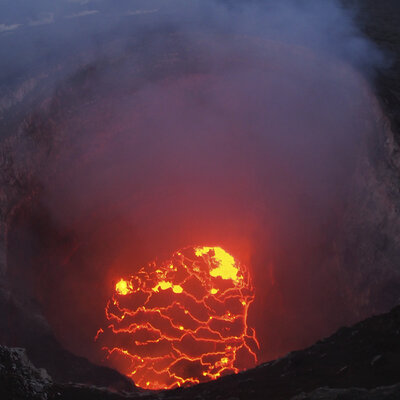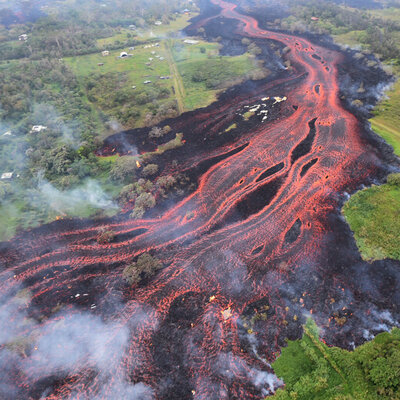
IPFS News Link • Hawaiian Islands
Kilauea's Wrath Threatens Power Plant -- And Hawaii's Most Powerful Industry
• https://www.npr.orgIn the weeks since the Kilauea volcano began belching lava into Hawaii's residential areas, the fiery flow has destroyed dozens of structures and covered scores of acres on the Big Island. But authorities fear its destructive reach could ravage at least two more cornerstones of the state: its power supply and, a little less tangibly, its all-important tourism industry.
On Monday evening local time, the Hawaii County Civil Defense agency announced that lava from nearby fissures had begun to encroach on the southern edge of a significant source of the state's power, the Puna Geothermal Venture.
The plant harvests hot liquid and steam from underground wells to drive turbine generators for electricity, which is then sold to the state's utility.
Another risk, besides the loss of power, rests in what might happen if the lava overcomes the state's protective measures: "There's a steam release, there's many chemicals, but primarily the critical factor would be hydrogen sulfide, a very deadly gas," Hawaii's Emergency Management Agency chief, Tom Travis, told reporters Monday night.
Days, Weeks, Years? Scientists Say Hawaii Volcano Eruption Has No End In Sight
Hawaii Volcano's Lava Spews 'Laze' Of Toxic Gas And Glass Into The Air
"County, state, and federal partners have been collaborating closely to monitor the situation and work with PGV to ensure the safety of the surrounding communities," the civil defense agency said in its alert. "Ten of the eleven wells have been quenched. Efforts are ongoing to make sure the site is secure and the community is kept safe."
When officials refer to "quenching," Travis explained, they mean "filling [the wells] full of cold water so that the weight of the cold water sitting in the pipe, the long pipe, is sufficient that instead of hot water entering the bottom of the well, cold water exits the bottom of the well."
It is the second step after simply shutting all the wells, which he says they already did when the event began. Crews were working overnight to quench the 11th and final well.


































